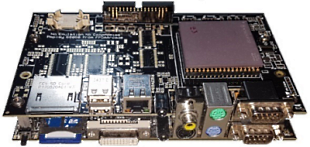News
The news archive is here.
Replay2 design nearing completion
I'm not doing very well at posting updates here, the Discord is where to be to get the latest gossip as we struggle to complete the design. The link below will work for a week, I'll post another update after that. https://discord.gg/UFH<REMOVE>PxsMc We are...
Replay2 update
It's been an exciting two months learning about the new Intel Agilex5 and the RK3588 used in our new Replay2 platform. The design and schematic are nearly completed - after a number of last minute changes/improvements. Samples of the part are on the way and we'll...
Replay2 Teaser
It's been a long time coming, but we are really excited to announce that Replay2 will be based around the Intel Agilex5 FPGA....
Bridging the analog gap
The investigations up to this point remained entirely in the digital domain. Waveforms like the ones shown in the VLM5030 gate-level design validation and lock-step comparison post were derived from the PCM data right before it enters the DAC. This is most suitable...
Analysis and a hypothesis
What could cause that the VLM5030 partially behaves non-deterministic for certain frames? The usual suspects are incomplete reset and ...randomness. Lots of internal states / flip-flops aren't affected by the RST input, so that could be a cause for repeated...
VLM5030 gate-level design validation and lock-step comparison
Now with the extracted gate-level design in place, how does it perform? The initial validation consisted of two basic phases: VHDL simulation in a test bench that dumps the PCM audio to a binary file. The binary is imported with Audacity and converted to WAV format...
The Replay1 Board
The Replay board is a high quality base platform for the development and usage of “cores”.
A core can be thought of as a hardware model that closely recreates the hardware of a specific home computer (Amiga, C64…) or arcade machine (Pac-Man, Phoenix…) and runs on the on-board Xilinx FPGA.
Beyond the hardware, the Replay also includes a comprehensive framework library and firmware to aid developers with core implementation and reduces the maintenance burden of supporting future replay hardware.
The Replay also provides ample opportunity to expand the hardware with various daughter boards for specific applications such as the 68060 Daughter Board.
The R1 Daughter Board
The 68K Daughter board provides a socket for an optional 68060 CPU and 128MB local/fastram for use by the 68060.
A floppy drive can also be attached to the daughter board (for use with supporting cores), making this an ideal upgrade for Amiga / AtariST enthusiasts.
In addition, the board expands the Replay’s I/O capabilities with a second SD card slot (dedicated to the FPGA), *Ethernet and *USB ports, a real time clock, *audio in socket (24-bit 96KHz stereo ADC) and Midi I/O interface.
* Audio In Record & Sampling will be driver and core dependent.
* Ethernet consists of a 100Mbit controller.
* Dual-port USB 2.0/Hi-Speed host controller.
The Replay2 Board


The R2 Daughter Board




Resellers
Amedia Computer (Europe) CBM Stuff / Jim Drew (USA)
Recommended Parts
Here’s a list of recommended parts and where to get them. Unfortunately the Replay board is out of stock and discontinued, but fear not, the Replay 2 board is in the making and will hopefully be ready soon(tm). (This version will also include USB Ports for HID Keyboards & Mice).
ATX Power Supply
ATX Power Adaptor
Backplate (Combo Replay1 & Daughterboard)
Dual Molex Power Splitter
ATX Power Adaptor
68060 Daughter Board
FPGA Replay Board
Mini-ITX Cases
(More Coming soon)
Unboxing and Review
Amiga RTG Test
Tiny size of 140x100mm, fits any mini-ITX cabinet.
Video output buffered by line driver with programmable filter. Option for SVHS/Composite video out using dedicated coder.
Expansion slot for JAMMA expansion board, MC68060+Ethernet board, etc.
Large Xilinx FPGA (1.6M Gates).
ARM System controller.
64 MB DDR2 DRAM. 48MegXtraRam+16MegBase ram.
High quality video output including DVI and analogue output.
3 channel programmable clock generator – can generate exact base clocks for PAL/NTSC Amiga for example.
Six layer PCB for good signal integrity and stability.
SD slot, DVI out, USB*, PS/2 and serial connectors.
Wolfson HI-FI quality audio DAC.
*The Internal USB connection is for connection to a host PC only.
Cores for your FPGA Replay
Although this project started out for recreating arcade games, I wondered back in 2003 if it was possible to implement a complete home computer system. The available FPGAs were much smaller in those days, but a complete VIC20 still fit.
Now we have a large number of platforms ported, including 16bit systems such as the Amiga and Atari ST.
The focus is always on implementing the original hardware as accurately as possible, but optional improvements are available too, such as a higher speed CPU, and in the Amiga case more Chip ram, RTG graphics, and modern sound with AHI support.
The content is provided “as is” without any guarantees and for educational use only. Use it at your own risk! By accessing the files here, you agree to check the individual licenses found in these files and use them accordingly (or don’t use them at all). You can get more details on these downloads on the forum. If you can’t accept this, please don’t download anything.


